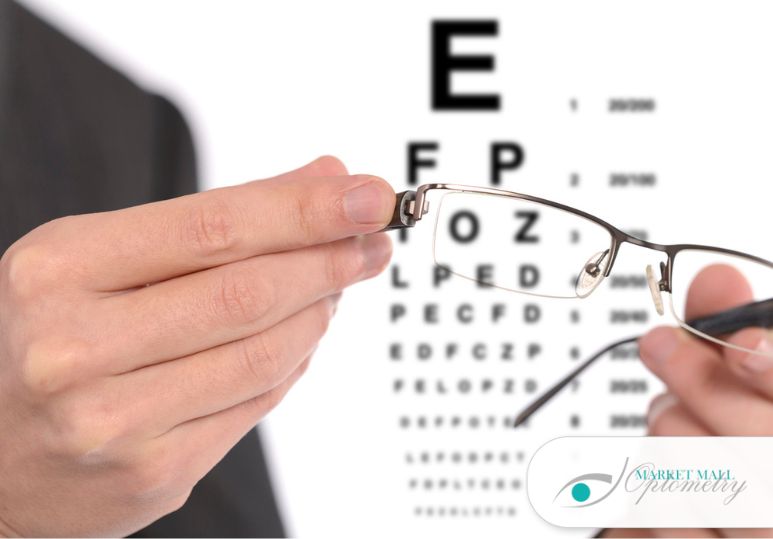After The Eye Exam: What Does It All Mean?
Your eyewear prescription contains valuable information about your vision correction needs. Here's a breakdown of the key components you might see on your prescription:
- OD and OS: OD refers to "oculus dexter," which means the right eye, while OS stands for "oculus sinister," representing the left eye.
- SPH: SPH refers to spherical correction and indicates whether you are nearsighted (myopia) or farsighted (hyperopia).
- A negative value (-) indicates myopia.
- A positive value (+) signifies hyperopia.
- The number associated with SPH indicates the amount of correction needed, measured in diopters.
For those with astigmatism, your prescription might include:
- CYL: CYL stands for cylinder and indicates the amount of astigmatism correction required.
- A non-zero CYL value indicates the presence of astigmatism.
- AXIS: AXIS represents the orientation of the astigmatism and is measured in degrees.
If you require additional correction for near vision due to presbyopia, a natural age-related condition, your prescription might include:
- ADD: ADD value indicates the strength of the reading portion in bifocal or progressive lenses.
Other important information that might be included in your prescription:
- PD: PD stands for pupillary distance and refers to the distance between your pupils. It ensures the accurate alignment of your lenses.
Remember these key points when understanding your eye prescription:
- OD represents the right eye, and OS represents the left eye.
- SPH indicates whether you are nearsighted (negative value) or farsighted (positive value).
- CYL and AXIS are relevant for astigmatism correction.
- ADD is for individuals with presbyopia who need additional correction for near vision.
- PD is the pupillary distance, crucial for accurate lens alignment.
Regular comprehensive eye exams are essential as your prescription may change over time.
If you have any questions or concerns, consult with your optometrist who can provide guidance and support.
Prescription For Better Vision? Market Mall Optometry.
Decoding your eyeglasses or contact lenses prescription doesn't have to be a daunting task. By understanding the abbreviations, values, and their significance, you can confidently navigate the world of corrective eyewear and make informed decisions about your visual needs.
If you are struggling with your vision or you want to see if your current prescription may be out of date, book an eye exam at Market Mall Optometry in Calgary NW. After a comprehensive eye exam, our team can provide insight into your vision and eye health, update your prescription, and provide effective treatment strategies. To schedule an eye exam, call Market Mall Optometry at 1-403-286-4884 or fill out the online contact form.
FAQ
Q: How does the CYL value in my prescription impact my vision?
A: The CYL value in your prescription indicates the amount of astigmatism correction needed. Astigmatism occurs when the cornea or lens of your eye is shaped irregularly, causing blurred or distorted vision at various distances. The CYL value represents the strength of astigmatism correction required in diopters. A higher CYL value indicates a greater degree of astigmatism. Correcting astigmatism with the appropriate CYL value in your eyeglasses or contact lenses helps to bring your vision into focus and reduce the blurriness caused by this condition.
Q: What does the AXIS value signify in my astigmatism prescription?
A: The AXIS value in your astigmatism prescription indicates the orientation of the astigmatism. It is measured in degrees and helps to determine the precise location on the cornea where the astigmatism is most pronounced. The AXIS value ranges from 0 to 180 degrees and provides information for the proper alignment of corrective lenses. It ensures that the cylindrical power in your lenses is positioned correctly to compensate for the irregular curvature of your eye, thus improving the clarity of your vision.
Q: Why is pupillary distance (PD) important in my eye prescription?
A: Pupillary distance (PD) is the measurement of the distance between your pupils. This value is crucial for the accurate alignment of your lenses in eyeglasses or contact lenses. Proper alignment ensures that the optical centers of the lenses align precisely with your pupils, allowing you to see clearly and reducing eye strain. An incorrect PD can result in visual discomfort, distortion, and reduced visual acuity. While PD is usually measured by an optician during your eye exam, it may also be provided on your prescription to ensure that your lenses are crafted to fit your unique eye anatomy.





